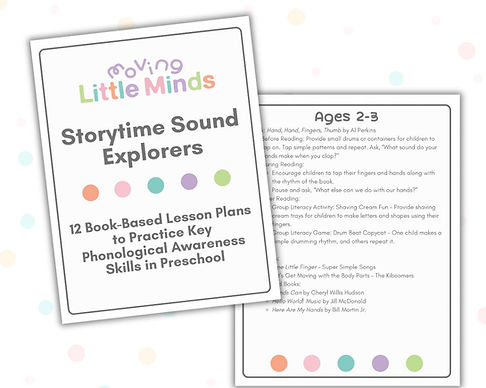Unlocking Potential: Why Multisensory Learning is Essential for Preschoolers
- Melissa McCall
- Mar 5, 2024
- 3 min read
Updated: Jun 5
From vibrant-colored sensory rice to textured squishy toys, the stores are stocked with items designed to engage young minds in multisensory exploration. These products aren't just about keeping little ones entertained, but they are tapping into a fundamental aspect of early childhood development...sensory learning.
Multisensory learning is a way to teach our children that engages multiple senses at the same time. For example, when we are learning letter sounds, we stand up and move our bodies to the motions while singing a special song and looking at alphabet cards. We are using sight, movement, and sound in this learning approach. With our little ones, when we learn about animals, we listen to animal sounds, read a book about animals, and touch animal puppets. In this approach, we are learning through sight, touch, and sound.
Children learn best when we take a multisensory approach to teaching and learning. We can provide the most beneficial learning environment for young children with a little thoughtful planning that merges both instruction with multisensory play!
Why is Multisensory Learning Valuable?

Besides being fun, learning through multiple senses stimulates different sensory pathways in the brain. Sensory pathways are like roads in our body that carry messages from our senses to our brain, helping us understand and interact with the world around us. When we engage multiple senses simultaneously, we enhance learning and memory retention by providing multiple pathways for information processing and mastery.
Other Benefits of Multisensory Learning
Cognitive Benefits:
Fosters creativity and imagination.
Enhances attention to task.
Boosts memory.
Encourages problem-solving.
Stimulates curiosity and exploration.
Deepens comprehension of concepts.
Provides opportunity to showcase learning preferences.
Social & Emotional Benefits:
Develops social skills and cooperation among peers.
Encourages communication and turn-taking.
Promotes positive interactions.
Provides opportunities for self-expression.
Stimulates calming emotions.
Physical Benefits:
Promotes development of fine and gross motor skills.
Refines motor coordination, strength, and dexterity.
Develops spatial awareness.
One of the greatest benefits of multisensory learning for caregivers is the ability to observe and understand children's unique learning preferences, needs, and styles. Through careful observation, we can gain insights into how each child responds to different activities and stimuli. By paying attention to their reactions, interests, and engagement levels, we can tailor learning experiences to suit individual preferences. This personalized approach ensures that each child has the opportunity to thrive and learn in a way that is best suited to them. By catering to diverse learning preferences, we can create a supportive and inclusive environment where every child can succeed!
6 Ways to Merge Sensory Learning and Literacy

Sound Guessing Game: Place various objects inside a container. Guess what's inside by shaking or tapping to identify the sound. You can also find sound guessing games on YouTube!
Play-Doh/Kinetic Sand: Encourage children to explore shapes, patterns, and textures with their hands. Bring in figurines for imaginative play. Introduce tools like rolling pins, cookie cutters, or textured stamps to learn shapes and letters!
Storytime with Snacks: Combine storytelling with a snack that complements the narrative. For example, if reading a story about apples, provide apple slices for the children to enjoy while listening.
Flashlight Play: Explore the concept of shadows by using flashlights or lamps to create shadow puppets on a wall or screen. Use flashlights to hunt for different shapes and letters around your environment.
Scented ABC Cards: Incorporate scent into this alphabet art project by using scented markers or glue with spices to creating to make ABC cards. Write the letters with smelly markers or create the letters with glue and sprinkle spices over top for both smell and texture.
Pop-Its: Use pop-its to build key phonological awareness skills. Practice sentence segmentation, sound (phoneme) segmentation, or syllables. One pop for each word or sound part!
Multisensory Book Favorites:
Ages Birth-3:
· First Word Touch and Feel Picture Cards by DK
· Karen Katz Books
· Noisy Animals by Tiger Tales
· Poke-a-Dot by Melissa and Doug
· A is for Apple by Tiger Tales
· Twinkle, Twinkle Little Star by Touch and Trace Nursery Rhymes
Ages 3–5:
· Tap the Magic Tree by Christie Matheson
· Press Here by Herve Tullet
· Mix It Up by Herve Tulle
· Touch the Brightest Star by Christie Matheson
· Don’t Touch This Book by Bill Cotter
· Tap to Play by Bill Burgerman
· This is Owl by Libby W.
My Favorite Sensory-Based Products!


Don't miss an update from Moving Little Minds!
Subscribe today!






















%20(52).jpg)

Comments